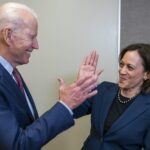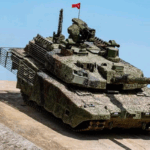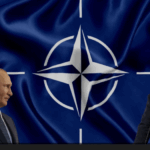China Has Become Powerful Before It Is Rich
On Aug. 22, China commemorated the 120th anniversary of the birth of former Chinese leader Deng Xiaoping, whose market reforms catapulted China from famine-stricken communist backwater to global economic power. Xi praised Deng for his contribution to the party and the nation. Despite the two leaders’ common goal of a powerful China, however, Xi’s strategy for achieving it markedly differs from Deng’s. By extending his reign as China’s paramount leader beyond the two-term limit favored by Deng and making no preparations for a transition of power during his lifetime, Xi has discarded one of Deng’s main ideas for ensuring long-term political stability. Whereas Deng emphasized market reforms, Xi is reasserting centralized control by the party-state. But the most remarkable change has been Xi’s abandonment of Deng’s famous dictum that China should keep a low profile in international affairs in order to build wealth. Instead, Xi has prioritized building military strength and competing with the United States for global power—with the result that China has become powerful before it is rich.
Indeed, while China is the world’s second-largest military spender after the United States, its gross national income (GNI) per capita of $13,400 in 2023 was only one-sixth of the corresponding U.S. number of $80,300. On this basis, China is at about the same income level as Mexico and Argentina. The enormous gap between China’s global ambitions and its middling prosperity is about to become a serious challenge for Beijing as it grapples with mounting economic problems. One must ponder if Xi’s China has made a strategic blunder by placing too much emphasis on global superpower competition too early.
On Aug. 22, China commemorated the 120th anniversary of the birth of former Chinese leader Deng Xiaoping, whose market reforms catapulted China from famine-stricken communist backwater to global economic power. Xi praised Deng for his contribution to the party and the nation. Despite the two leaders’ common goal of a powerful China, however, Xi’s strategy for achieving it markedly differs from Deng’s. By extending his reign as China’s paramount leader beyond the two-term limit favored by Deng and making no preparations for a transition of power during his lifetime, Xi has discarded one of Deng’s main ideas for ensuring long-term political stability. Whereas Deng emphasized market reforms, Xi is reasserting centralized control by the party-state. But the most remarkable change has been Xi’s abandonment of Deng’s famous dictum that China should keep a low profile in international affairs in order to build wealth. Instead, Xi has prioritized building military strength and competing with the United States for global power—with the result that China has become powerful before it is rich.
Indeed, while China is the world’s second-largest military spender after the United States, its gross national income (GNI) per capita of $13,400 in 2023 was only one-sixth of the corresponding U.S. number of $80,300. On this basis, China is at about the same income level as Mexico and Argentina. The enormous gap between China’s global ambitions and its middling prosperity is about to become a serious challenge for Beijing as it grapples with mounting economic problems. One must ponder if Xi’s China has made a strategic blunder by placing too much emphasis on global superpower competition too early.
The relationship between power and wealth is an enduring debate in the study of international relations. In an international system of anarchy, states build military power to improve their security, and wealth is a fundamental requirement to build military power. But there is a potential dilemma in that excessive military spending will hamper a state’s long-run prosperity and, in turn, ultimately constrain its ability to continue building military power. This dilemma presents itself in two major ways.
First is the so-called guns-butter-growth trade-off. Each dollar or yuan of a state’s budget can be spent on the military (“guns”), citizens’ welfare (“butter”), or investments that may boost the economy (“growth”). Spending on one leaves less to spend on the others. This trade-off, however, is not the main concern for China today: Beijing only spends around 2 percent of its GDP annually on defense, far below what Washington and Moscow spent during the Cold War. In fact, Chinese leaders are keenly aware of the Soviet Union’s struggles with the guns-butter-growth trade-off and want to avoid committing the same mistake.
The second type of power-vs.-wealth dilemma is the trade-off between guns, butter, and openness—and in this regard Beijing faces an increasingly grim situation. Reduced openness and shrinking ties with the world economy as a consequence of Xi’s embrace of superpower competition is emerging as a major stumbling block for Beijing’s future economic growth. For half a century—ever since Washington engaged Beijing in the early 1970s as part of its containment policy toward Moscow—China has been able to access Western markets, capital, technology, and management know-how, and this integration into the world economy has been a key factor in China’s economic growth.
But once competition crosses from the economic realm into the geopolitical, security policy considerations start to influence trade and investment flows. Thus, with China now demonstrating the ambition and capabilities to seriously challenge U.S. interests, the United States and allies are responding by reducing their economic interdependence with China as part of a comprehensive policy of derisking. This reaches far beyond simply imposing tariffs on Chinese exports and includes limiting Chinese investments, home-shoring production from China, and denying China access to high-end and dual-use technologies. Even some emerging-market countries have begun to restrict some of their economic ties to China. Taken together, these policies could restrict China’s path to high-income status and undermine its future position as a superpower as a direct consequence of Xi’s choice for China to exert power before it becomes rich.
The timing of the Western derisking policy is highly problematic for Beijing. China’s economy may not be headed for a collapse, but its economic model is at a crossroads. Its population is rapidly aging, the workforce is already shrinking, and youth unemployment is rising. Economic growth is declining fast, limiting Beijing’s ability to tackle these challenges. According to the International Monetary Fund (IMF), which relies on data provided by Beijing, China achieved an average growth rate of 8.6 percent from 2010 to 2014. Over the next five-year period (2015-2019), that average fell to 6.6 percent before declining further to 4.6 percent during the last five years (2020-2024). The IMF expects growth to slow to an annual average of 3.3 percent by 2029. As China’s economy grows larger and more modern, a flatter growth curve is no big surprise. Japan and South Korea both experienced a similar economic trajectory, with three to four decades of high export-led growth before annual rates fell below 4 percent. It is now more than four decades since Deng launched his economic reforms, so one could even argue that a deceleration was overdue.
Yet unlike Japan and South Korea, which had already been high-income economies for several years before growth dropped off, China’s economy is slowing significantly before passing that threshold. The World Bank currently classifies countries as high-income once they reach a minimum GNI per capita of $14,005. With economic growth slowing quickly, Beijing will find it much more challenging to make the transition from an export- and investment-driven economic model to a more domestic- and consumer-based growth model, which is not only the hallmark of most rich countries but would also give Chinese citizens a bigger share of the economic pie. A recent survey indicates that the mood among Chinese citizens is changing, from optimism about China’s economic prospects to a more pessimistic outlook and waning confidence in Xi’s economic leadership.
In addition, the structural imbalances in China’s economic model that former Premier Wen Jiabao identified during his famous speech to the National People’s Congress in March 2007 largely remain unsolved. Primarily, Chinese investment has continuously been above 40 percent of GDP for the last two decades, which is extremely high compared to the G-7 countries, whose average investment-to-GDP figure was 23 percent in 2023. China’s model is extreme even when compared to the earlier experience of Japan and South Korea. Although their development models were characterized by a similarly dominant state, investment rarely exceeded 35 percent of GDP. Moreover, the signals from the Chinese Communist Party’s third plenum meeting in July this year indicate that Xi is taking his country in the direction of even more state-driven investments in order to move China into high-end manufacturing. At the same meeting, Xi defined national security as the pivotal foundation for China’s modernization, suggesting that his decision to tighten the party-state’s grip on the economy is influenced by China’s rivalry with the United States. By doing so, Xi is not only postponing a necessary rebalancing of China’s economic model toward private consumption. His policy is also likely to set off even more concerns in the United States and Europe about Chinese industrial overcapacity, resulting in higher tariffs and other restrictions on Chinese exports.
In retrospect, could Xi have chosen another path? In short, yes. Of course, China would at some stage have become a superpower and peer competitor of the United States regardless of Xi’s policies, simply due to China’s size, vast resources, and four decades of economic growth. Still, by making different choices, Xi could have alleviated the threat perception associated with China’s rise and given his country more time to build a robust economy.
First, Xi could have spent less on weapons platforms that are clearly offensive. Beyond total military expenditure, it matters greatly whether a country is building up offensive or defensive capabilities. A focus on defensive weapons to secure the Chinese homeland would have mitigated what international relations scholars call the security dilemma, whereby one state’s growing power is often perceived by another state as a growing threat. Instead, China has built an increasing number of offensive platforms that can be used to project power in its region and beyond. In recent years, China has built long-range bomber aircraft and hypersonic missiles. But it is China’s massive naval buildup—including aircraft carriers—that has changed the threat perception. Moreover, China is testing these platforms in increasingly complex military exercises far beyond its home waters.
Second, Xi could have chosen to pursue a less confrontational foreign policy. At the time of the 2008 Beijing Olympics and the Expo 2010 in Shanghai, U.S. and Western engagement with China was at its zenith. Since then, a number of events have established an image of China as hawkish and aggressive. These include military clashes with India in the Himalayas, challenging U.S. vessels operating in the Western Pacific, testing Japan’s military reactions around the Senkaku/Diaoyu Islands in the East China Sea, and asserting its vast unilateral claims over the South China Sea through land reclamation activities and maritime confrontations with its regional neighbors.
Furthermore, Xi’s policy of wolf warrior diplomacy, whereby Chinese officials talk and behave in an openly hostile manner toward foreign countries, has eroded China’s image abroad as well. In addition, Beijing’s response to then-U.S. House Speaker Nancy Pelosi’s visit to Taiwan in August 2022, including an unprecedented campaign of military activities around Taiwan, led to one of the worst U.S.-Chinese diplomatic crisis since the Cold War. Finally, Beijing’s unwavering support for Moscow after Russia’s invasion of Ukraine in February 2022 has been particularly damaging for China’s relationship with Europe. A more measured Chinese approach on these issues would clearly have made a difference.
It is still too early to conclude how seriously China’s economy will be affected by U.S. and allied derisking. Because China is so strongly integrated into the world economy, derisking will be costly for the United States and its allies as well. Nonetheless, the list of industrial sectors and technologies covered by Washington’s derisking policy is already wide-ranging; it includes strategic items such as semiconductors and critical minerals, as well as electric vehicles, solar cells, and medical products. Moreover, the list is expected to expand in tandem with the growing intensity of the U.S.-China rivalry. It means that China has to maneuver its way around sagging growth rates, an aging population, and the shift to high-end manufacturing even as the door to global economic integration is closing. This is a far cry from Deng’s open-door policy. Xi will find that there are costs for placing power above plenty in China’s national strategy too soon.
By Jo Inge Bekkevold
Source: Foreign Policy







